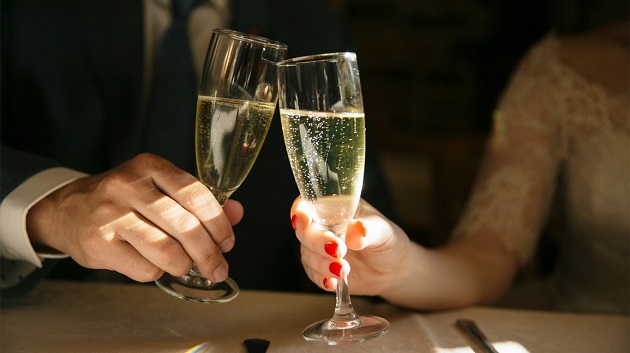What Makes Preservative Free Champagne the Perfect Choice for Any Occasion
No matter the occasion, champagne is always a good choice. Whether it’s to celebrate special family moments, unforgettable encounters with friends, ladies or gentlemen’s night out, or simply enjoying a glass at home after a long day at work, sometimes a glass of bubbly is all you need. You may have noticed that preservative free champagne is becoming quite popular, and this for some good reasons. The goal of producing preservative-free sparkling wine is to use the utmost care and keep intervention to a minimum.

Source: healthline.com
The first step is taking grapes free of disease or bird damage. In the winery, the grapes are handled carefully and are kept at cool temperatures and away from air as much as possible. During the fermenting phase, temperature control and soft extraction are used and the skins are pressed off early. As soon as fermentation is complete, the wine is clarified, filtered and bottled. Due to this minimal intervention approach, preservative-free sparkling wines tend to tell a pure story of the grape and vineyard. You will find that this wine is easy to drink, vibrant and packed with fruit flavours.
What Preservatives Are Added to Wine and Why?
Wines generally contain sulphur dioxide(SO2). It’s the main preservative used throughout the stages of making wine and it can sometimes be labelled as “preservative 220 added”. In Australia, there are strict restrictions regarding the number of sulphites used and laws require it to be declared on the wine labelling. This doesn’t apply to wines from many countries outside Australia.
Preservatives have been used in wine since the early 1990s to help preserve the wine and slow down the deterioration process. They are used to help the wine get to your palate in the best condition possible. Using quality grapes in pristine condition means less preservative needs to be added.
Why You Should Be Drinking More Preservative Free Wine?
If you tend to indulge in wine a bit too much, know that the more preservative-free wine you consume, the better you’ll feel the next day. Preservatives are known to contribute significantly to hangovers. For occasions when you’ll be drinking champagne heavily and need to get up in the morning, consider sticking to a preservative free champagne.
Exposure to sulphur dioxide could also be a problem if you’re sensitive to it. For example, if you have asthma, sulphite sensitivity or a sulphite allergy. Symptoms after drinking sparkling wine with sulphite may be a headache or skin irritation.

Source: forbes.com
Are Organic, Biodynamic and Natural Wine all Preservative Free?
Not necessarily. Just because a wine is organic, biodynamic and natural, that doesn’t mean it is preservative-free. The terms organic and biodynamic refer to vineyard practices. It’s possible to find many organic wines which still add sulphur dioxide in the winery, even though it’s typically a minimum amount. To obtain organic certification, a vineyard simply has to adhere to certain vineyard practices.
Here’s a quick definition of some of the key terms:
- Organic wine: this term means the wine is made by the principle of organic farming, which typically involves the exclusion of pesticides, herbicides, fungicides and artificial chemical fertilizers in the vineyard.
- Biodynamic wine: this type of farming treats the vineyards as a living system. It’s the best of ever-increasing ecological self-sufficiency and ethical-spiritual considerations. Think soil fertility, healthy plant growth and working with the rhythms of the cosmos.
- Natural wine: a wine made from 100% biodynamic/organic grapes ideally grown by the winemaker, using zero additions of preservatives in the winery.
- Preservative-free wine: no preservatives are added during the winemaking process.
How to Know If A Wine Is Preservative Free?
Every winemaker that has put in all the effort to make a preservative-free wine will clearly mention it on the front or the back label of their products. You’ll also be able to find further information online as well.

Source: purewow.com
How to Choose a Preservative Free Sparkling Wine for Every Occasion
Weekend Brunching
You may have heard that the right food can make any wine good. However, the right wine can also enhance the food’s flavour. For example, bubbles and brunch are a perfect match. For this occasion, a preservative-free prosecco is delicious enough to drink on its own and is a great choice to mix with fruity ingredients.
Weeknight Drinking
Who said popping a bottle of bubbly is reserved only for holidays and celebrations? Sometimes, sipping sparkles on a casual weeknight is exactly what a long day calls for. Purchasing a bottle of Cava will cost you less than a bottle of real Champagne, although is it’s made using the same process.
Celebrations
Showing up with a magnum wine, especially when it’s sparkling, is a great way to demonstrate that you care. Whether prosecco, champagne, or anything in between, arriving with an oversized bottle of bubbles is always a crowd-pleasing move, no matter what the occasion might be!